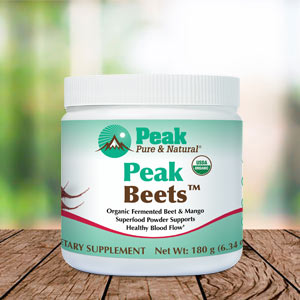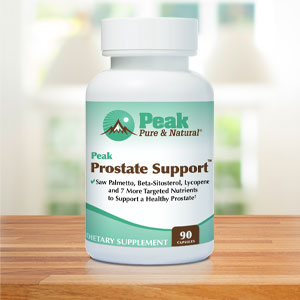Get Easy Health Digest™ in your inbox and don’t miss a thing when you subscribe today. Plus, get the free bonus report, Mother Nature’s Tips, Tricks and Remedies for Cholesterol, Blood Pressure & Blood Sugar as my way of saying welcome to the community!
Got osteoarthritis? Why you should be golfing

Being diagnosed with osteoarthritis can feel like a prison sentence. You might assume that it means your sporting days are over, and you’ll have to be content with watching sports on TV or stick to light activities like gardening. But there’s good news: you don’t have to give up physical activity.
In fact, golf has been proven to be one of the best activities for those with this condition. The low-impact nature of the sport is a huge advantage, but that’s only one of the many benefits of golfing for people with osteoarthritis.
Let’s explore some of the reasons golf is an amazing sport if you’ve got the condition and why you absolutely should consider taking it up if you haven’t already!
How does golf benefit people with osteoarthritis?
Contrary to what your instinct might tell you, movement is an excellent remedy for all the symptoms associated with osteoarthritis. Your doctor might tell you to do light physical activity, so sports like golf might not cross your mind.
But the truth is, golfing is one of the best things you can do if you’ve got bone and joint issues and you still want to stay active. Here are some of the reasons you should definitely be considering it.
Physical Benefits of Golfing
One of the biggest problems that people with arthritis have is finding a sport that doesn’t cause them more pain than they already have. Golf is perfect — it’s low impact, improves flexibility, and strengthens the muscles.
Low Impact
The low-impact nature of golf means that it’s a great sport for those with any kind of joint issues. There’s no harsh impact on the joints with golf — it’s all walking and on soft, shock-absorbing surfaces.
Even if walking is hard for you, the golf cart is ready and waiting to be used! Even the impact of the golf club hitting the ball is minimal, so there’s no need to worry about hurting your hands, especially if you choose to wear golf gloves.
Improves Flexibility
The golf swing is a fluid motion. There’s no jarring or impact, so as long as you get your form right, the movement can actually help to improve your flexibility.
The more you practice your golf swing, the better your range of motion will become. While this might not help your fingers, it could help to prevent the stiffness from extending to other joints.
Strengthens Muscles
While golf isn’t the most muscular of workouts, it definitely offers some muscle-building benefits. If you’re playing on a regular basis, you can expect your muscles to get stronger, although they may not get bigger.
Stronger muscles can provide extra support for the joints. When your joints are stiff or unstable, having strong muscles can just give you that little bit of structural support you need to keep you moving with confidence.
Pain management and relief
Aside from not contributing to pain and helping you to gain physical strength benefits, golfing also offers some pain relief effects. It might sound counterintuitive, but playing a round of golf can help reduce the ache! Here’s how.
Increased Circulation
The movements associated with golf — fluid swings and walking — help to increase circulation throughout the body as your heart rate increases and pumps the blood around the body. That means that blood gets to your extremities faster, bringing oxygen and nutrients to painful joints for healing.
Endorphin Release
Along with better blood flow, exercise also stimulates a release of endorphins. Endorphins are “happy chemicals” in the brain, which boost calm, improve mood, and lower pain. Plus, evidence suggests that exercising out in nature can compound these good effects, so golf is a win-win situation!
Mental health benefits of golfing
Physical health isn’t the only thing that gets a nice boost when you get out on the golf course. Your mental health does too. It’s not unusual for people with osteoarthritis to struggle with their mental health too.
Being in pain can make it hard to stay positive. You also might find that you struggle with tasks you used to find easy, which can lead to sadness and feeling despondent. Ultimately, you might find that you end up grieving for the things you’ve lost.
While golf isn’t going to fix everything, the sport can give you a mental health boost. Those endorphins we mentioned can boost your mood and make you feel a whole lot happier, as they take the edge off the pain.
They also counteract the effects of cortisol, the stress hormone, so you can expect some of your stresses to melt away when you’re on the course. It’s the perfect place to be mindful and change your frame of mind, so you can find creative solutions to things that may be stressing you out.
It’s also ideal for those who may be grieving the loss of their ability to play other sports or do other physical activities. Getting onto the course, learning the game, and challenging yourself without aggravating your joints is a joyful feeling when you’ve been struggling with osteoarthritis.
Social benefits of golf
Let’s not forget about the social benefits. It can be hard for people with osteoarthritis to socialize because they may not be able to take part in some of the same activities their friends or family enjoy. This can lead to feeling guilty that plans must revolve around you or simply worrying about being the reason others might miss out on the fun.
The golf course is an excellent place to meet people who could become regular golfing buddies! Or, you can invite your friends or family members to join you for a round, making it as much a social experience as it is a sporty one.
Need proof of golf’s benefits for osteoarthritis?
Osteoarthritis doesn’t have to hold you back from living a fun-filled, active life. Yes, you may have to make some changes to your lifestyle, but you can still enjoy sports and the outdoors and stay healthy at the same time.
In fact, a research team including academics from Australia and the UK found that golfers with osteoarthritis experience less psychological distress and better health in general compared to most folks.
According to lecturer and occupational therapist, Dr. Brad Stenner, “Our research has highlighted the important role that golf has in building friendships, contributing to community and bringing a sense of belonging, all of which are known to contribute to mental health and wellbeing.”
Of course, staying active and exercising regularly is one of the most important aspects of managing osteoarthritis.
“Lower impact activity such as golf can assist in maintaining activity whereas higher impact activities such as running, jogging and gym may place significant stress on the joints, contributing to increased symptoms and pain,” says Dr. Stenner.
If you’re looking for a way to get the joints moving, blood flowing and the endorphins rolling, and have some fun without pain, try golf!
Editor’s note: There are perfectly safe and natural ways to decrease your risk of blood clots including the 25-cent vitamin, the nutrient that acts as a natural blood thinner and the powerful herb that helps clear plaque. To discover these and other secrets of long-lived hearts, click here for Hushed Up Natural Heart Cures and Common Misconceptions of Popular Heart Treatments!
Source:
Osteoarthritis sufferers swing their way to better health — EurekaAlert















